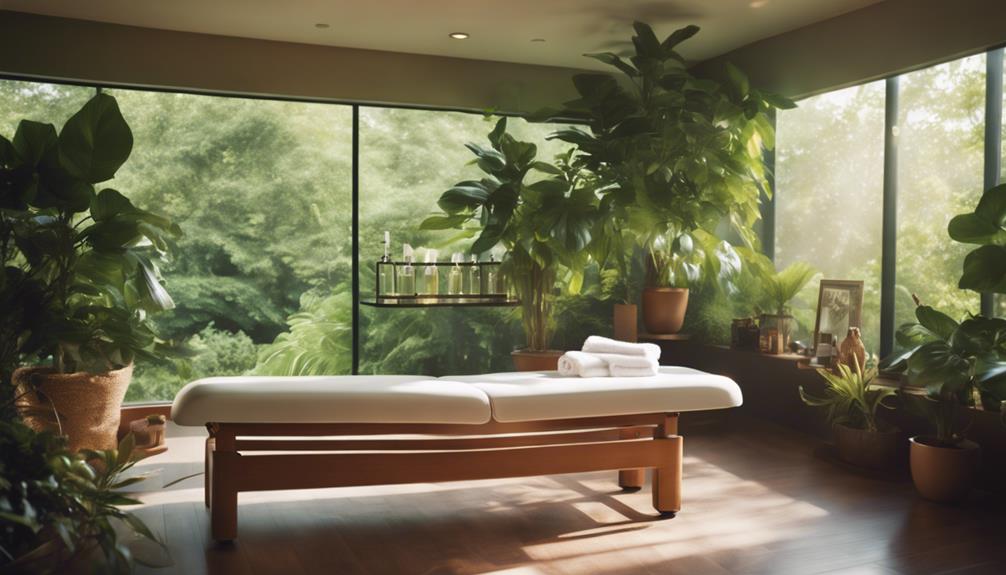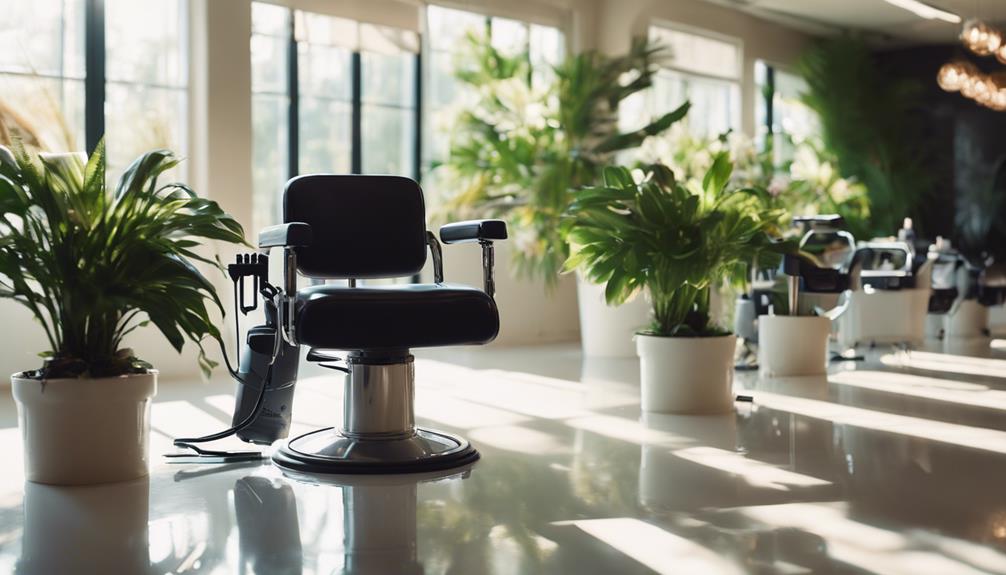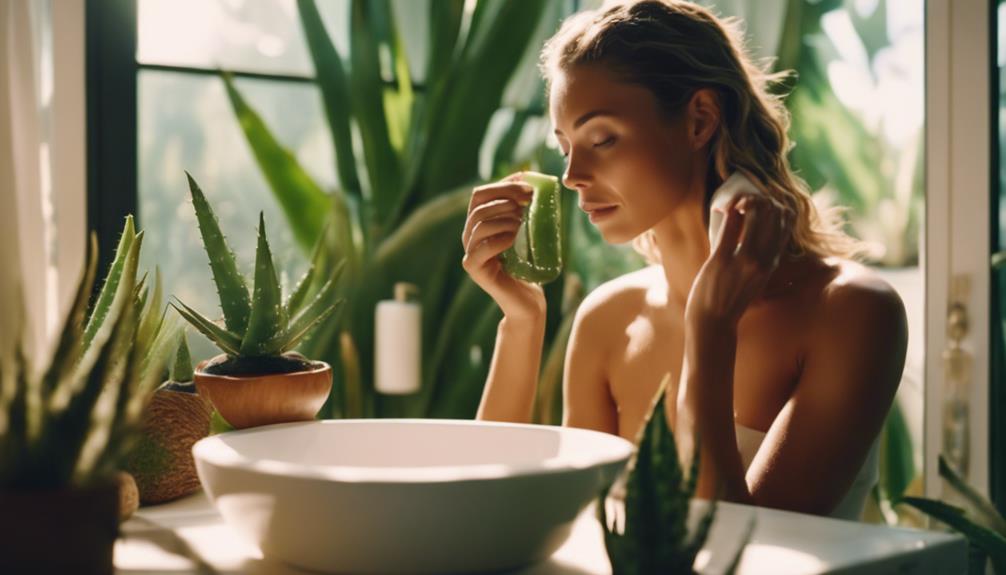Caring for your tanning bed with eco-friendly methods protects both your skin and the planet. Start by using biodegradable cleaners, like a mix of water and white vinegar, to avoid harsh chemicals. Incorporate natural disinfectants by adding tea tree and lemon essential oils to your cleaning solution for extra antibacterial properties. Clean after each use with non-abrasive microfiber cloths to preserve the bed's integrity. Schedule regular maintenance and consider using sustainable cleaning tools made from recycled materials. Your choices can contribute to a healthier environment. Discover more tips to keep your tanning routine eco-friendly and efficient.
Key Takeaways
- Use a mixture of 1 cup distilled white vinegar and 1 cup water as an eco-friendly disinfectant for tanning beds.
- Clean the tanning bed after each use with non-abrasive microfiber cloths to prevent bacteria buildup.
- Opt for reusable spray bottles made from recycled materials to promote sustainability in your cleaning routine.
- Schedule weekly deep cleaning sessions with gentle tools to maintain the tanning bed's integrity and appearance.
Eco-Friendly Cleaning Solutions
When you clean your tanning bed, choosing eco-friendly cleaners not only protects the environment but also guarantees a safe experience for you and future users.
Opt for biodegradable cleaners that are free from harsh chemicals. A simple mixture of water and white vinegar works wonders as an effective cleaning solution. You can also use eco-friendly disinfectants specifically designed for tanning beds; just let the cleaner sit briefly before wiping for enhanced effectiveness.
Remember to be gentle during the cleaning process to maintain the integrity of the tanning bed. Using non-abrasive materials like microfiber cloths guarantees you won't scratch the surface, preserving its quality while keeping it clean and hygienic.
Prioritize eco-friendly options for a healthier tanning experience.
Natural Disinfectants for Tanning Beds
Creating a natural disinfectant for your tanning bed is an easy and effective way to guarantee a clean and safe environment for every user. You can whip up a simple solution using common household ingredients. Here's how:
- Mix 1 cup distilled white vinegar with 1 cup water for a powerful base.
- Add 10 drops of tea tree oil for its antibacterial properties.
- Incorporate 5 drops of lemon essential oil for a fresh scent and added disinfecting power.
- Shake well before each use to ascertain ingredients blend properly.
Spray the mixture on all surfaces, allowing it to sit for a minute before wiping down.
This eco-friendly option keeps your tanning bed fresh while being kind to the environment!
Non-Abrasive Cleaning Materials
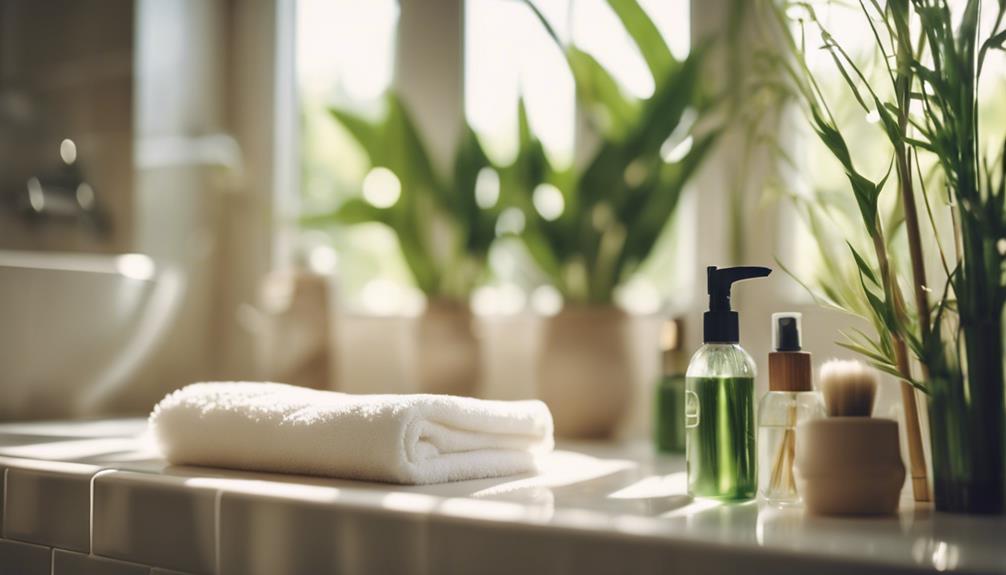
To maintain the integrity of your tanning bed while using your natural disinfectant, it's important to choose non-abrasive cleaning materials that effectively remove dirt without scratching surfaces.
Opt for microfiber cloths, as they're gentle yet efficient at picking up dust and grime. Soft sponges are another great choice, ensuring you won't damage the acrylic.
When selecting eco-friendly cleaning solutions, make sure they're non-damaging to your tanning bed's materials. Avoid harsh scrubbers or abrasive pads that could leave marks and diminish its appearance.
Always remember to clean with a soft touch to preserve both the bed's quality and your investment. By choosing the right materials, you can keep your tanning bed in excellent condition while being environmentally conscious.
Regular Maintenance Practices
Regular maintenance is essential for keeping your tanning bed clean, hygienic, and in peak condition for every use. By following these practices, you can enhance the longevity of your equipment and provide a safe experience for every user:
- Clean after each use: Wipe down all surfaces with eco-friendly cleaners to prevent bacteria buildup.
- Deep clean weekly: Schedule a thorough cleaning session to tackle any grime that may accumulate.
- Use gentle tools: Opt for microfiber cloths and non-abrasive sponges to avoid scratching the bed.
- Inspect regularly: Check bulbs and acrylic for any wear or damage to guarantee optimal performance.
Sustainable Accessories for Care
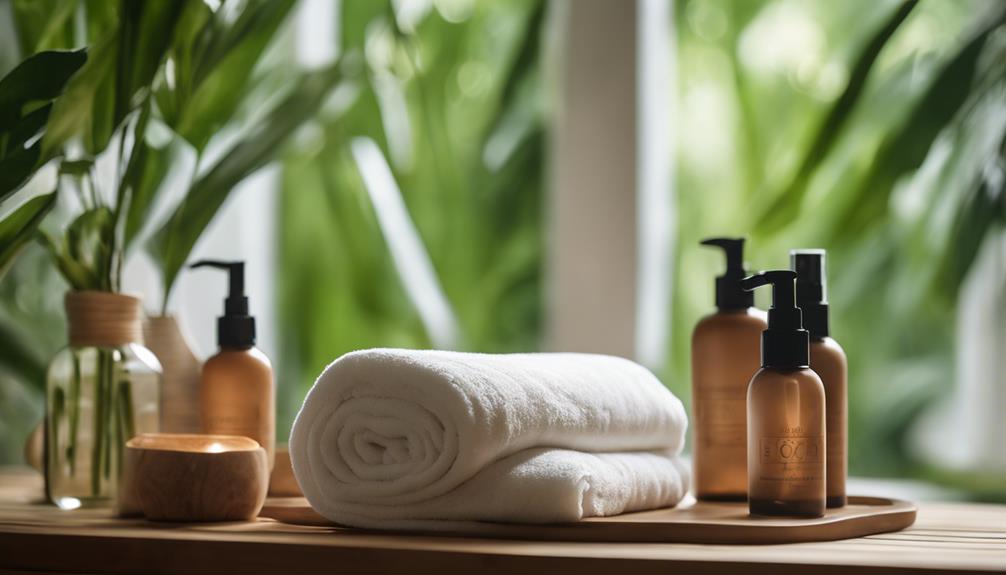
Incorporating sustainable accessories into your tanning bed care routine not only benefits the environment but also enhances the overall cleaning process.
Start by using reusable spray bottles made from recycled materials for your eco-friendly cleaning solutions.
Opt for bamboo cleaning tools, which are durable and biodegradable, to effectively maintain your tanning bed.
Choose microfiber cloths for wiping down surfaces, as they're gentle and highly effective without scratching.
Investing in high-quality, sustainable accessories will improve your cleaning efficiency while reducing waste.
Remember, every small change contributes to a healthier planet, so make your choices count.
Tanning Bed Safety Tips
Protecting your skin and eyes while using tanning beds is essential for a safe tanning experience. Follow these safety tips to guarantee you tan responsibly:
- Wear Protective Eyewear: Always use goggles designed for tanning beds to shield your eyes from harmful UV rays.
- Limit Tanning Time: Stick to recommended tanning times based on your skin type to prevent burns and long-term damage.
- Maintain Cleanliness: Confirm the bed is clean and germ-free before use by following regular maintenance practices.
- Know Your Skin Type: Understand your skin's sensitivity to UV exposure and adjust your tanning routine accordingly.
Choosing Tanning Bed Lotions
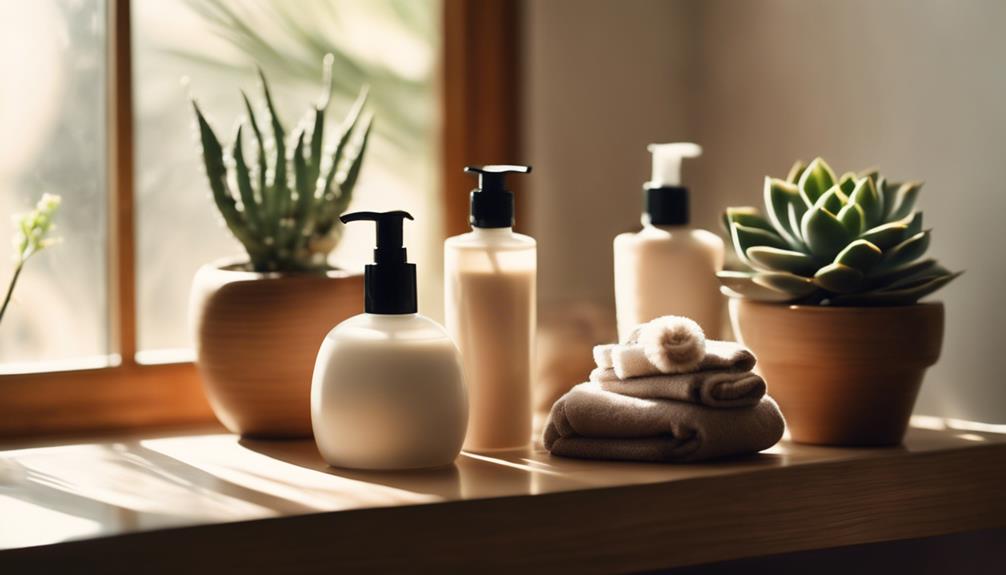
Selecting the right tanning bed lotion can greatly enhance your tanning results and skin health. Look for lotions with natural ingredients like aloe vera, which hydrates your skin, and vitamins that nourish it.
Bronzers can boost your color, giving you that sun-kissed glow faster. You'll want to choose a lotion that suits your skin type and preferences, whether you like a light fragrance or a thicker texture.
Always apply the lotion evenly before your session to guarantee consistent color. Don't forget to moisturize after tanning to maintain hydration and extend your tan.
Alternatives to Tanning Beds
If you want a sun-kissed glow without the risks of UV exposure, there are plenty of safe alternatives to tanning beds that can give you beautiful results. Here are some great options to evaluate:
- Self-Tanners: These products provide a natural-looking tan without sun exposure. Look for ones with natural ingredients.
- Bronzing Lotions: Apply bronzing lotions for instant color and a glow without the commitment of a self-tanner.
- Gradual Tanning Creams: Use these for a subtle tan that builds over time, giving you more control over the shade.
- Tinted Moisturizers: These offer a hint of color while hydrating your skin, perfect for a light glow.
Choose any of these alternatives for a radiant complexion without the harmful effects of UV rays!
Frequently Asked Questions
How Often Should I Replace My Tanning Bed Bulbs?
You should replace your tanning bed bulbs every 500 to 1,000 hours of use, depending on the bulb type. Regularly check for a decrease in tanning effectiveness to determine when it's time for a replacement.
Can I Use Regular Cleaners on a Tanning Bed?
You shouldn't use regular cleaners on a tanning bed. They often contain harsh chemicals that can damage the bed's surfaces. Instead, opt for eco-friendly cleaners specifically designed for tanning beds to guarantee proper care.
What Are the Environmental Impacts of Tanning Beds?
You might not realize it, but tanning beds can greatly impact the environment. From energy consumption to chemical use, their effects ripple through ecosystems, raising concerns about sustainability and urging you to evaluate safer alternatives.
Is There a Specific Way to Store Tanning Bed Accessories?
To store tanning bed accessories, keep them in a cool, dry place. Avoid direct sunlight and moisture. Use a dedicated container to prevent damage and guarantee you can easily locate everything when needed.
How Can I Tell if My Tanning Bed Is Safe to Use?
To determine if your tanning bed's safe, inspect the bulbs for burns, check the timer for accuracy, and guarantee the acrylic is free of cracks. Regular maintenance and proper cleaning enhance safety during your tanning sessions.
Conclusion
By embracing eco-friendly practices for your tanning bed, you're not just enhancing your experience; you're also making a positive impact on the environment.
Did you know that using biodegradable cleaners can reduce water pollution by up to 80%?
With simple changes like choosing natural disinfectants and sustainable accessories, you can create a healthier space for yourself while contributing to a greener planet.
So go ahead, enjoy that sun-kissed glow guilt-free and sustainably!
